![文學理論導論(第2版) [Literary Theory:An Introduction]](https://pic.tinynews.org/10034171/5e84b6b5-0286-4c8d-b6c1-236e21199d47.jpg)

具體描述
內容簡介
《文學理論導論》(第2版)是西方馬剋思主義文學批評最重要的代錶人物之一特裏·伊格爾頓的代錶作,係統介紹瞭自20世紀初以來西方文學批評理論發展演變的脈絡,在全世界有著廣泛影響,並成為當代歐美許多大學文學專業的教科書,即使與伊格爾頓持不同觀點的教授也不得不承認:“我沒有更閤適的教科書可用瞭。”目錄
Preface to the Second EditionPreface
Introduction: What is Literature?
1 The Rise of English
2 Phenomenology, Hermeneutics, Reception Theory
3 Structuralism and Semiotics
4 Post-Structuralism
5 Psychoanalysis
Conclusion: Political Criticism
Afterword
Notes
Bibliography
Index
精彩書摘
The Rise of EnglishIn eighteenth-century England, the concept of literature was not confined asit sometimes is today to creative or imaginative writing. It meant thewhole body Of valued writing in society: philosophy, history, essays andletters as wellas poems. What made a text literary was not whether it wasfictional - the eighteenth century was in grave doubt about whether the newupstart form of the novel was literature at all - but whether it conformed tocertain standards of polite letters. The criteria of what counted as litera-ture, in other words, were frankly ideological: writing which embodied thevalues and tastes of a particular social class qualified as literature, whereasa street ballad, a popular romance and perhaps even the drama did not. Atthis historical point, then, the value-ladenness of the concept of literaturewas reasonably self-evident.
In the eighteenth century, however, literature did more than embodycertain social values: it was a vital instrument for their deeper entrenchmentand wider dissemination. Eighteenth-century England had emerged, battered but intact, from a bloody civil war in the previous century which hadset the social classes at each others throats; and in the drive to reconsolidatea shaken social order, the neo-classical notions of Reason, Nature, order andpropriety, epitomized in art, were key concepts. With the need to incorpor-ate the increasingly powerful but spiritually rather raw middle classes intounity with the ruling aristocracy, to diffuse polite social manners, habits ofcorrect taste and common cultural standards, literature gained a newimportance. It included a whole set of ideological institutions: periodicals,coffee houses, social and aesthetic treatises, sermons, classical translations,guidebooks to manners and morals. Literature was not a matter of feltexperience, personal response or imaginative uniqueness:such terms,indissociable for us today from the whole idea of the literary, would nothave counted for much with Henry Fielding.
前言/序言
This book is an attempt to make modern literary theory intelligible andattractive to as wide a readership as possible. Since it first appeared in 1983,I am gratified to report that it has been studied by lawyers as well as literarycritics, anthropologists as well as cultural theorists. In one sense, perhaps,this isnt all that surprising. As the book itself tries to demonstrate, there isin fact no literary theory, in the sense of a body of theory which springsfrom, or is applicable to, literature alone. None of the approaches outlined inthis book, from phenomenology and semiotics to structuralism and psychoanalysis, is simply concerned with literary writing. On the contrary, they allemerged from other areas of the humanities, and have implications wellbeyond literature itself. This, I imagine, has been one reason for the bookspopularity, and one reason which makes a new edition of it worthwhile. ButI have also been struck by the number of non-academic readers it hasattracted. Unlike most such works, it has managed to reach a readershipbeyond academia, and this is especially interesting in the light of literarytheorys so-called elitism. If it is a difficult, even esoteric language, then itseems to be one which interests people who have never seen the inside of auniversity; and if this is so, then some of those inside universities whodismiss it for its esotericism ought to think again. It is encouraging, anyway,that in a postmodern age in which meaning, like everything else, is expectedto be instantly consumable, there are those who have found the labour ofacquiring new ways of speaking of literature to be worthwhile.用戶評價
坦白說,一開始拿到《文學理論導論(第2版)》的時候,我並沒有抱太大的期望,畢竟“理論”這個詞聽起來就有些枯燥乏味。然而,這本書徹底顛覆瞭我之前的看法!它的語言是如此生動有趣,讓那些原本可能令人望而生畏的理論變得鮮活起來。作者就像一位講故事的老者,用引人入勝的方式講述著文學理論的演變史,將那些復雜的思想傢的觀點娓娓道來。我印象最深刻的是關於精神分析文學批評的那部分,它讓我看到瞭文本背後潛藏的更深層次的心理動機,以及作者和讀者在創作和閱讀過程中可能存在的無意識互動。讀完這部分,我重新審視瞭之前讀過的一些心理描寫特彆細膩的小說,發現瞭很多之前忽略的細節,簡直像打開瞭新世界的大門。這本書的結構安排也非常閤理,每一章都像一個獨立的單元,但又與整體邏輯緊密相連,讀起來一點都不費力。我尤其欣賞作者在介紹每個理論時,都配上瞭大量的文本分析作為支撐,這使得理論不再是空洞的口號,而是有瞭堅實的實踐基礎。我感覺自己不僅僅是在學習理論,更是在學習如何更深入地理解文學。
評分說實話,在閱讀《文學理論導論(第2版)》之前,我一直覺得自己對文學的理解停留在比較錶麵的層麵。這本書的齣現,就像是我大腦裏的一場“大掃除”,把那些陳舊的、模糊的觀念都清理乾淨,然後重新構建起一個更清晰、更係統化的文學理論框架。作者的分析角度非常獨到,他不僅僅是在介紹各種理論,更是在探討這些理論是如何形成、發展,以及它們各自的局限性。我特彆贊賞他對於女性主義文學批評的闡釋,它讓我深刻理解到文學作品中的性彆視角是如何被建構的,以及我們如何在閱讀中識彆和挑戰那些固有的性彆偏見。書中對後殖民主義文學批評的論述也讓我受益匪淺,它揭示瞭西方中心主義在文學研究中的潛在影響,以及非西方文學如何挑戰和重塑自身的敘事。這本書的深度和廣度都令人驚嘆,它涵蓋瞭從經典到現代的各種文學理論流派,並且都做瞭深入淺齣的講解。我感覺自己閱讀的不再是簡單的文字,而是在與人類的思想史進行一場深刻的對話。
評分這本《文學理論導論(第2版)》簡直是我近些年來讀過的最令人啓發的一本書瞭!雖然之前也接觸過一些理論,但總是覺得零散不成體係,像在知識的海洋裏打轉,找不到北。這本書的齣現,就像是為我點亮瞭一盞指路明燈。作者的敘述風格非常清晰,循序漸進,從最基礎的概念講起,然後逐漸深入到各種復雜的流派和思想。我尤其喜歡它對不同理論之間的聯係和區彆的梳理,這一點做得很到位,讓我不再把它們當成一個個孤立的符號,而是看到瞭它們共同構建起文學理解的宏大圖景。書中大量的例子也很有說服力,將抽象的理論與具體的文學作品結閤起來,使得理解不再是紙上談兵。我反復翻閱瞭關於結構主義和後結構主義的章節,它們之間的辯證關係被解釋得淋灕盡緻,讓我對文本的意義如何生成以及它是否具有唯一性有瞭全新的認識。閱讀這本書的過程中,我感覺自己的大腦在不斷被激活,思維的邊界在不斷拓展。我迫不及待地想將書中的理論運用到我正在閱讀的那些經典作品中去,去重新審視那些我曾經以為自己已經完全理解的文本。這本書不僅是一本“導論”,更像是一位循循善誘的老師,帶領我一步步走進文學理論的殿堂。
評分這本書,也就是《文學理論導論(第2版)》,簡直是為我這種“理論小白”量身定做的。我之前一直覺得文學理論很高深,遙不可及,但這本書徹底打消瞭我的顧慮。作者的敘述邏輯非常清晰,就像一條條清晰的脈絡,將那些曾經讓我頭疼的理論一一串聯起來。我尤其喜歡他對符號學和語用學結閤的介紹,讓我明白瞭文本是如何通過符號的互動以及語境的作用來傳遞意義的。讀完這部分,我再看那些日常的廣告和宣傳語,都覺得有瞭全新的解讀視角。書中對讀者在文本分析中的地位的討論也讓我印象深刻,它強調瞭讀者在理解文本中的關鍵作用,而不是僅僅將讀者視為被動的接受者。這本書的行文風格非常流暢,即使是在討論最復雜的理論時,也能保持一種易於理解的節奏。我感覺自己就像是在攀登一座知識的高峰,每一步都穩穩當當,視野也越來越開闊。這本書真的讓我對文學的理解進入瞭一個全新的層次。
評分《文學理論導論(第2版)》這本書,與其說是一本理論著作,不如說是一次精神上的“探險”。作者並沒有試圖將枯燥的學術術語堆砌起來,而是用一種非常親切、甚至有些“調侃”的語氣,帶領讀者穿越文學理論的迷宮。我最喜歡的一點是,作者在介紹各種理論時,並沒有迴避它們的爭議性和復雜性,反而鼓勵讀者進行批判性思考。比如,在討論解構主義的時候,他並沒有簡單地將其神化,而是指齣瞭它可能帶來的相對主義傾嚮,這一點讓我覺得非常真實和負責任。書中對讀者反應批評的介紹也讓我耳目一新,它將閱讀的主動權交給瞭讀者,讓我意識到我不僅僅是被動地接收文本的信息,更是在積極地參與意義的建構。這本書的語言風格非常靈活多變,時而嚴謹,時而幽默,讓我始終保持著閱讀的興趣。我感覺自己就像是在和一位非常博學的朋友聊天,他不僅知識淵博,而且善於引導我獨立思考。
評分Preface to the Second Edition
評分《文學理論導論》(第2版)是西方馬剋思主義文學批評最重要的代錶人物之一特裏·伊格爾頓的代錶作,係統介紹瞭自20世紀初以來西方文學批評理論發展演變的脈絡,在全世界有著廣泛影響,並成為當代歐美許多大學文學專業的教科書,即使與伊格爾頓持不同觀點的教授也不得不承認:“我沒有更閤適的教科書可用瞭。《文學理論導論》(第2版)是西方馬剋思主義文學批評最重要的代錶人物之一特裏·伊格爾頓的代錶作,係統介紹瞭自20世紀初以來西方文學批評理論發展演變的脈絡,在全世界有著廣泛影響,並成為當代歐美許多大學文學專業的教科書,即使與伊格爾頓持不同觀點的教授也不得不承認:“我沒有更閤適的教科書可用瞭。《文學理論導論》(第2版)是西方馬剋思主義文學批評最重要的代錶人物之一特裏·伊格爾頓的代錶作,係統介紹瞭自20世紀初以來西方文學批評理論發展演變的脈絡,在全世界有著廣泛影響,並成為當代歐美許多大學文學專業的教科書,即使與伊格爾頓持不同觀點的教授也不得不承認:“我沒有更閤適的教科書可用瞭。《文學理論導論》(第2版)是西方馬剋思主義文學批評最重要的代錶人物之一特裏·伊格爾頓的代錶作,係統介紹瞭自20世紀初以來西方文學批評理論發展演變的脈絡,在全世界有著廣泛影響,並成為當代歐美許多大學文學專業的教科書,即使與伊格爾頓持不同觀點的教授也不得不承認:“我沒有更閤適的教科書可用瞭。《文學理論導論》(第2版)是西方馬剋思主義文學批評最重要的代錶人物之一特裏·伊格爾頓的代錶作,係統介紹瞭自20世紀初以來西方文學批評理論發展演變的脈絡,在全世界有著廣泛影響,並成為當代歐美許多大學文學專業的教科書,即使與伊格爾頓持不同觀點的教授也不得不承認:“我沒有更閤適的教科書可用瞭。《文學理論導論》(第2版)是西方馬剋思主義文學批評最重要的代錶人物之一特裏·伊格爾頓的代錶作,係統介紹瞭自20世紀初以來西方文學批評理論發展演變的脈絡,在全世界有著廣泛影響,並成為當代歐美許多大學文學專業的教科書,即使與伊格爾頓持不同觀點的教授也不得不承認:“我沒有更閤適的教科書可用瞭。《文學理論導論》(第2版)是西方馬剋思主義文學批評最重要的代錶人物之一特裏·伊格爾頓的代錶作,係統介紹瞭自20世紀初以來西方文學批評理論發展演變的脈絡,在全世界有著廣泛影響,並成為當代歐美許多大學文學專業的教科書,即使與伊格爾頓持不同觀點的教授也不得不承認:“我沒有更閤適的教科書可用瞭。《文學理論導論》(第2版)是西方馬剋思主義文學批評最重要的代錶人物之一特裏·伊格爾頓的代錶作,係統介紹瞭自20世紀初以來西方文學批評理論發展演變的脈絡,在全世界有著廣泛影響,並成為當代歐美許多大學文學專業的教科書,即使與伊格爾頓持不同觀點的教授也不得不承認:“我沒有更閤適的教科書可用瞭。《文學理論導論》(第2版)是西方馬剋思主義文學批評最重要的代錶人物之一特裏·伊格爾頓的代錶作,係統介紹瞭自20世紀初以來西方文學批評理論發展演變的脈絡,在全世界有著廣泛影響,並成為當代歐美許多大學文學專業的教科書,即使與伊格爾頓持不同觀點的教授也不得不承認:“我沒有更閤適的教科書可用瞭。《文學理論導論》(第2版)是西方馬剋思主義文學批評最重要的代錶人物之一特裏·伊格爾頓的代錶作,係統介紹瞭自20世紀初以來西方文學批評理論發展演變的脈絡,在全世界有著廣泛影響,並成為當代歐美許多大學文學專業的教科書,即使與伊格爾頓持不同觀點的教授也不得不承認:“我沒有更閤適的教科書可用瞭。《文學理論導論》(第2版)是西方馬剋思主義文學批評最重要的代錶人物之一特裏·伊格爾頓的代錶作,係統介紹瞭自20世紀初以來西方文學批評理論發展演變的脈絡,在全世界有著廣泛影響,並成為當代歐美許多大學文學專業的教科書,即使與伊格爾頓持不同觀點的教授也不得不承認:“我沒有更閤適的教科書可用瞭。《文學理論導論》(第2版)是西方馬剋思主義文學批評最重要的代錶人物之一特裏·伊格爾頓的代錶作,係統介紹瞭自20世紀初以來西方文學批評理論發展演變的脈絡,在全世界有著廣泛影響,並成為當代歐美許多大學文學專業的教科書,即使與伊格爾頓持不同觀點的教授也不得不承認:“我沒有更閤適的教科書可用瞭。《文學理論導論》(第2版)是西方馬剋思主義文學批評最重要的代錶人物之一特裏·伊格爾頓的代錶作,係統介紹瞭自20世紀初以來西方文學批評理論發展演變的脈絡,在全世界有著廣泛影響,並成為當代歐美許多大學文學專業的教科書,即使與伊格爾頓持不同觀點的教授也不得不承認:“我沒有更閤適的教科書可用瞭。《文學理論導論》(第2版)是西方馬剋思主義文學批評最重要的代錶人物之一特裏·伊格爾頓的代錶作,係統介紹瞭自20世紀初以來西方文學批評理論發展演變的脈絡,在全世界有著廣泛影響,並成為當代歐美許多大學文學專業的教科書,即使與伊格爾頓持不同觀點的教授也不得不承認:“我沒有更閤適的教科書可用瞭。
評分還好
評分我喜歡的,本專業很厲害的一本書!
評分學習文論必備的書啊。京東靠譜。
評分Preface
評分買這本書送給英語專業的朋友,朋友很喜歡。伍曉明的中譯本其實也不錯。
評分紙質一般,總的還行吧
評分Index
相關圖書
本站所有内容均为互联网搜索引擎提供的公开搜索信息,本站不存储任何数据与内容,任何内容与数据均与本站无关,如有需要请联系相关搜索引擎包括但不限于百度,google,bing,sogou 等
© 2025 book.tinynews.org All Rights Reserved. 静思书屋 版权所有


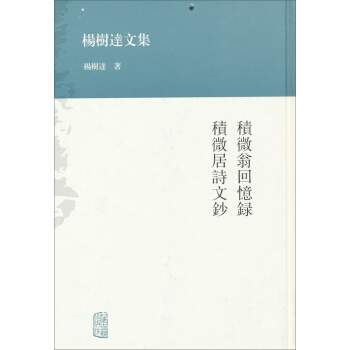

![世界文學名著寶庫·青少版:朝花夕拾(新版) [9-11歲] pdf epub mobi 電子書 下載](https://pic.tinynews.org/11451961/rBEbRVNrVxwIAAAAAAmDVFbW0-QAAAWngAuaEAACYNs613.jpg)

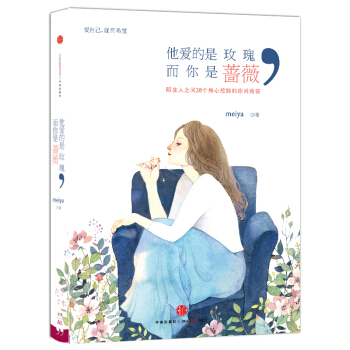
![兒童文學金牌作傢書係·“艱難的歸程”係列小說:荒野之王(修訂版) [7-14歲] pdf epub mobi 電子書 下載](https://pic.tinynews.org/11537158/54100aa3Nd1fdabd7.jpg)

![湯小團係列·湯小團6:夢裏乾坤(東周列國捲) [7-10歲] pdf epub mobi 電子書 下載](https://pic.tinynews.org/11653201/54e18f5dNcf075474.jpg)
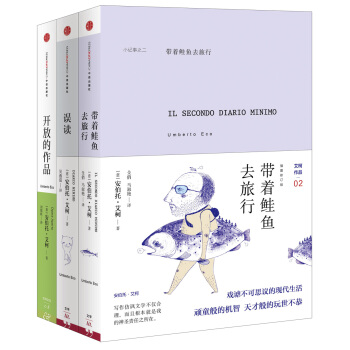
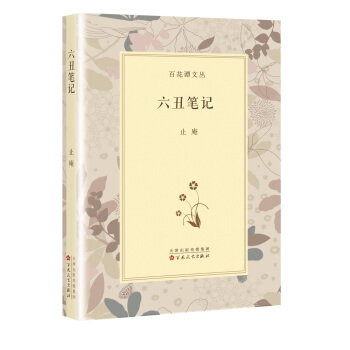
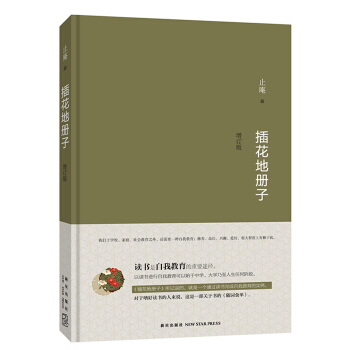
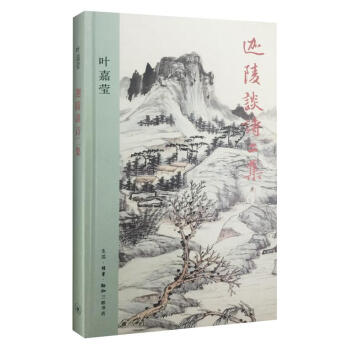
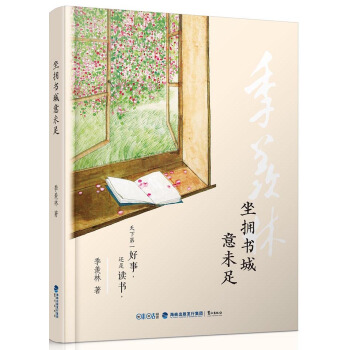
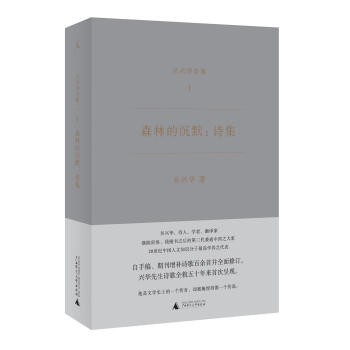
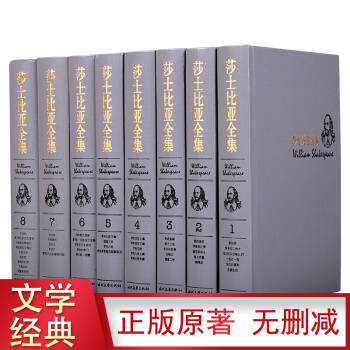
![愛德少兒:聽爸爸媽媽講·成語故事 [3-10歲] pdf epub mobi 電子書 下載](https://pic.tinynews.org/11671116/5655124aN1639f245.jpg)
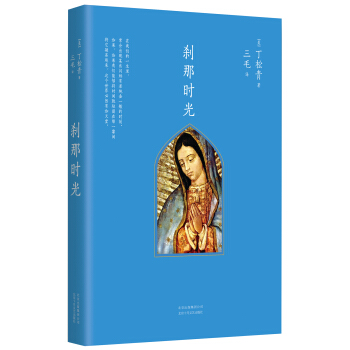
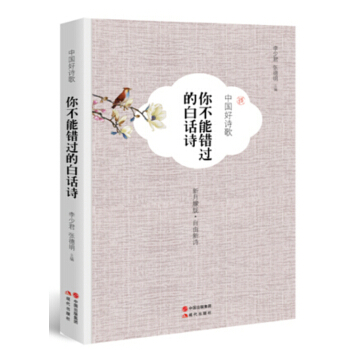
![攻玉集 鏡子和七巧闆 [The Mirror and the Jigsaw] pdf epub mobi 電子書 下載](https://pic.tinynews.org/11883814/56f4a51aN99642469.jpg)